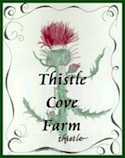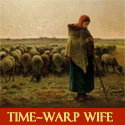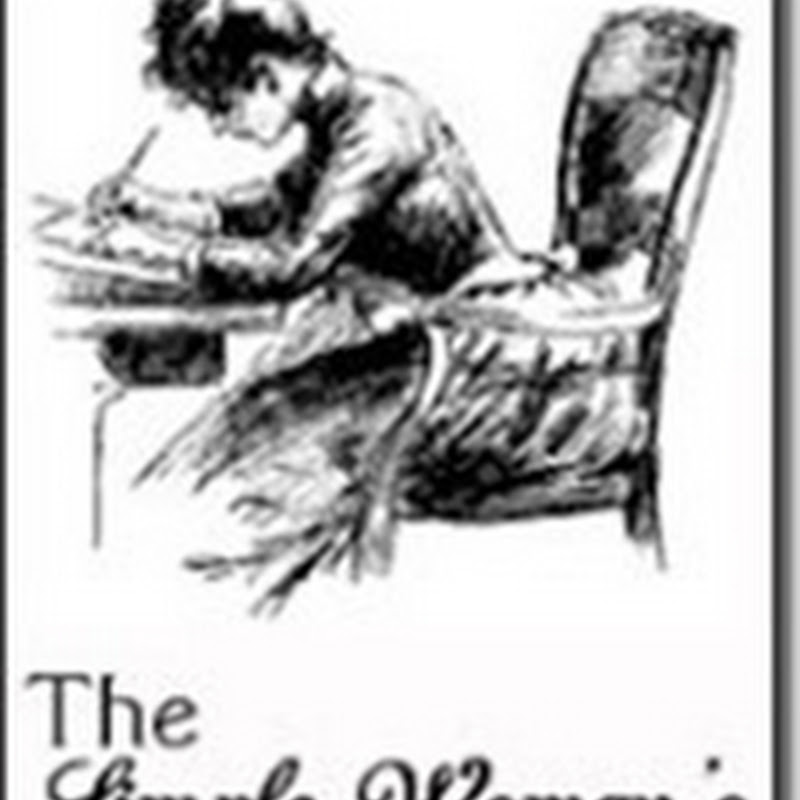I am the 7th great-grand niece of Jenny Wiley (on my daddy's side). Some of you from this part of the country may even have been to the State Park in Kentucky that bares her name. The saga, below, was written by a fellow gr-grand niece in the same generation as I am, however, I do not know her. But I DO appreciate that she took the time to research & record Jenny's story. If you want to read further, look for the book, "White Squaw." You may even want to use this story as part of your homeschool studies on pioneer living in the 1700's.
Jenny's story ~ as you will see if you read on ~ is both tragic & wonderful. Sort of a 1700's version of a female Job. I've thought about Jenny at times & I wonder...Would I have been as strong as she was? Would I have been as brave as she was? Would I have been able to pick up the pieces of my life as she seems to have done? Jenny was an amazing women who makes me proud of my heritage & I hope to meet her in Heaven.
Blessings from Ohio, Kim<><
~~~~~~~~~~~~~~~
A True Saga of Heroic Survival and Escape from the Indians
About Jenny (Sellards) Wiley (1760-1831)
Jean "Jenny" Sellards was born in Pennsylvania in about 1760, the daughter of Hezekiah Sellards and (Ukn) Brevard. The family migrated to Walkers Creek, Tazwell County, Virginia (now Bland County, Virginia) where Jenny met and married Irish immigrant Thomas Wiley, in 1778.
The couple erected a log cabin, where their first four children were born. (It is considered by most reputable researches that names given to the Wiley children killed at Walkers Creek, and in captivity, are given by tradition only, and not by documented fact.)
Late one fall afternoon, probably in 1789, a group of renegade Indians stormed the Wiley cabin while Thomas was on a hunting expedition. Jenny, expecting their fifth child, watched as her young brother and all but her youngest child were brutally murdered. Jenny and the surviving child were taken captive by the Indians. Shortly after the capture, that child was also murdered, as was the child Jenny was expecting, shortly after its birth.
After many months in captivity, Jenny managed to escape and make her way to safety at Harmons Blockhouse in Floyd (now Johnson) County, Kentucky. She returned to Walkers Creek where she was reunited with Thomas, and began a new family. Eventually, the Wiley family crossed the Big Sandy once more, and settled permanently in current Johnson County, Kentucky, near Paintsville and the blockhouse that had been her salvation after her escape.
Five children were born to Jenny and Thomas after her escape. Over the years, thousands of their descendants have been enumerated.
Jenny's story is one of sheer faith, courage, determination, stamina, and tenacity that has captured the hearts and minds of everyone who has heard her story.
Prologue:
Jean (Jenny Wiley) Sellards was a daughter of Hezekiah Sellards. She was born about 1760, probably in Pennsylvania. Hezekiah had brought his family to the wilderness area of Virginia with a group of settlers which he led across the mountains. Jenny was about 19 years old when she met and married Thomas Wiley. The were married at Walkers Station in 1779. They settled in the Walker's Creek area and here Thomas built their two room log cabin home where four children were born to them . Jenny's sister Elizabeth had married John Borders and they lived on the adjacent Farm.

Jenny Wiley Memorial Plaque, near Prestonsburg, KY
Thanks go to Larry Fitzpatrick for the picture.

Jenny Wiley Memorial Plaque, near Prestonsburg, KY
Thanks go to Larry Fitzpatrick for the picture.
Chapter One:
All afternoon John Borders had heard the intermittent hooting of owls as he worked his farm across the hill from where the Wiley homestead was located. This would have seemed strange to hear the owl hoots in mid day, except for the fact that he knew that there were wandering bands of Indians in the area and this was their favorite way of communicating with each other when they were attempting to keep their presence unknown. He was more than a little worried because he knew that his brother-in-law Thomas Wiley had left before dawn with a load of dried herbs to attempt to sell at the nearest settlement. (The herbs probably included Ginseng and "Sweet" Anise and such, {my assumption} for they still grow wild in the hills through out the area.)
John Borders was married to Jenny's sister Elizabeth. As the day grew late and the sky darkened with rain clouds, he decided to make the trek across the hill to warn his wife's sister, and to invite her to bring her family and come spend the night at his and Elizabeth's home. As he knocked at the door and entered he saw Jenny sitting at her loom, weaving some cloth for the family's clothes. He told her of his fears and she promised him she would do as he suggested just as soon as she finished her weaving.
When she had finished her work and as she was gathering some things to take with them across the hill, the door burst open and a horde of howling Indians rushed into the room wielding tomahawks. She fell back into the room clutching her youngest child, still a baby, to her breast. She was forced to watch as the painted savages made short work of her other children and her fifteen year old younger brother. When their scalps were hanging from the Indians' belts one of them lunged for her and tried to take her baby from her. When she resisted, the Shawnee Chief, Black Wolf intervened. After some violent argument among themselves they left, with the chief dragging Jenny behind him as she clung to her baby.
(She was to find out later that the Indians had thought they were in the home of their old enemy Mathias Harmon, a famed Indian fighter who had killed one of the Chief's sons. This had happened about a year before as Harmon and his party were fighting off an Indian attack upon themselves not far away. The Indians had come to seek revenge on their enemy and had mistakenly burst into the Wiley home.)
This was the horrible beginning of an equally horrible experience for Jenny which was to last for almost a year.
Chapter Two:
It was dark by now and the Indians faded into the shadows of the forest dragging Jenny, still clinging to her baby, along with them. The next day they stopped once for food and to rest for a while. Jenny refused the piece of dried venison they offered her, but since the baby was sickly and fretful the Chief, who was also the Shawnee medicine man went into the forest and returned with some herbs. He boiled the herbs and made a tea which Jenny gave to the baby. This seemed to do some good and they pressed on. Jenny grew weaker as time went on, but she did her best to keep up for fear of reprisal on her or the child. One day a scout whom they had sent back to make sure they weren't being followed, rushed up to warn them that Mathias Harmon was on their trail not far away.
By this time the baby was even more fretful and began to cry. The Chief tore the baby from Jenny's clasp and dashed it's head against a Beech tree. (Superstitious people would say years later, that was the reason for a blight on the Beech tree which killed off all the Beeches in southern Ohio and northern Kentucky.) After that they moved even faster until far into the night. Soon they heard the sound of rushing water and they came to a river where she was forced to swim across with an Indian on both sides of her. Jenny was nearing both physical and mental exhaustion when they finally stopped again to eat. This time Jenny accepted the dried venison they offered.
(I haven't mentioned it before but complicating things all the while, was the fact that Jenny was pregnant with another child and all this strenuous activity was causing pre-mature stirrings of the unborn Baby.)
Again they swam another even bigger river (which she found out later was the Big Sandy), with the Indians helping her across as before. They were very anxious to put the river between them and their enemy Mathias Harmon. They went down river until they came to the Ohio river, and down the Ohio to where they could see the Shawnee village at the mouth of the Scioto river on the Ohio side. By this time the flooded Ohio river was a raging torrent, overflowing it's banks and making a crossing at this time totally impossible.
(You get a better feeling for the ordeal they were putting a pregnant Jenny through if you recall, as I said earlier, it was some 30 to 40 miles from the mouth of the Big Sandy to the mouth of the Scioto river where the Shawnee village stood. All together the distance they had traveled from the Wiley home to the Scioto River would have been more than twice that.)
Black Wolf and his band of Indians decided to retreat back into the Kentucky hills to a camping place they had used before to wait for the flood waters to recede. It's hard to understand why, but they didn't stop until they were all the way back up into what is the present day Lawrence County, Kentucky where they made camp on Big Blaine Creek to wait things out. They placed Jenny in a little cave at the edge of the camp. It was there on a cold winter night some time later, that she gave birth to her new baby. Tradition says the she named him Robert Bruce.
Jenny was forced to perform the most menial of tasks around the Camp site, and as time went by she also learned to speak and understand much of the Indian language. One day as she was about her chores she was confronted by a group of the Indians who informed her it was time for her baby to undergo the test by water to see if he would become a warrior. They broke sticks from the underbrush to form a small raft and laid the baby on a piece of bark on top of the raft. They said if the baby didn't cry he would grow up to be a strong and brave warrior and would be raised in the ways of the Indians. If he were to cry, he would not be a brave warrior and would be put to death.
Jenny attempted to save the baby by grabbing it from the raft and fleeing into the forest. Needless to say she was re-captured and brought back and the Indians placed the child back on the make-shift raft. The baby gave one feeble little cry and an Indian grabbed him up by the heels and smashed his head against a tree as had been the fate of her other child months before on the trail.
Chapter Three:
On the fateful night of the massacre at the Wiley home, Thomas Wiley who was late in coming home from the settlement was met by his brother-in-law John Borders and told of what had happened at his home that day. Thomas was of course overcome with grief and would have taken off after the Indians immediately if John had not restrained him. Word was sent to Mathias Harmon and after surveying the situation he started getting a party together to overtake the Indians and rescue Jenny. Upon seeing the distraught condition of Jenny's husband, he shrewdly decided to split the rescue party in half and sent the party with Thomas on a wild goose chase in the opposite direction.
He was relatively certain what trail the Indians would take, so his hand picked hunting party began doggedly following their trail. Of the many signs they saw which told them they were on the right track, the worst was the gory body of Jenny's child which the Chief had smashed against the tree. They buried the child there on the bank of a large creek which fed into the Tug River. This creek is known today as Jenny's Creek. They resumed their pursuit of the Indians with renewed vigor until they came to the Big Sandy River, which by this time was so swollen by the rushing flood waters it would have been foolhardy to attempt a crossing with the horses. The party was forced to turn back. They returned to their homes, intending to try again once the rivers were passable.
Chapter Four:
As the winter wore on the Indians moved again to another camp, this time in what is now Johnson County, Kentucky. There they were afforded a little more protection from the elements and were visited from time to time by other bands of Indians who brought news of the activities of Harmon and the other settlers. Jenny was able to understand enough to bolster her spirits somewhat and she began to plan her escape. One night the Indians brought a young white man into the camp and proceeded to torture him before burning him at the stake. Afterwards they came to her cave and told her that she too was to be burned at the stake. She could see her thoughts and plans to escape dashed to the ground as easily as the Indians had smashed her two children against the trees, but she was determined not to give them the satisfaction of seeing her break under the torture.
Her stoic behavior so impressed an old Cherokee Chief that he started to argue with Black Wolf and he bartered to obtain possession of Jenny and take her back to Tennessee as one of his wives. To Jenny, who could understand enough of the language to determine what the conversation was about, this was almost as bad as the death sentence she was already facing. The Cherokee broke out his store of Jewelry and trinkets that he had gathered on his many raids on the white man and placed them one by one on a blanket in front of Black Wolf until he finally grunted his approval and the bargain was struck. Following that, the two of them left her and went off to celebrate.
The next morning Cap John, as the Cherokee Chief was called, came to Jenny's cave and told her that the entire Indian band was going on a hunting trip and would return late that day. He tied her to a tree using rawhide thongs and left her there. It was a dreary day, much like that day so long ago, it seemed to Jenny, when she suffered the first part of her nightmarish journey into captivity. As the day wore on she slumped against the thongs, almost totally exhausted both physically and mentally. It started to rain, just a drizzle at first, then it turned into a torrential rain, thoroughly wetting the thongs that restrained her. The weight of her body as she slumped against the rawhide caused them to stretch as rawhide will do when wet. Feeling them loosen, she worked feverishly then to stretch them more and finally she was free!
Quickly she ran into the forest with renewed strength in her body, undoubtedly brought on by the adrenaline that surely must be flowing heavily now as she was experiencing the exultation of her newly regained freedom. She put to use some of the very things she had learned from the Indians as they were striving to elude Mathias Harmon who was tracking them months ago. She leaped into the first stream she came to and started wading downstream so she would leave no signs of her passing. The heavy rains were now filling the creek with rushing water and several times she was swept from her feet as the water grew deeper and the current stronger.
Later, when the creek flowed into a larger body, she was forced to swim it to reach the other bank where the mouth of another creek joined with the larger one. She was unaware that this was the very creek which would later bear her name and where the chief had killed her baby on the way to her long captivity. Or maybe she did start to recognize some familiar territory, for something, whether it be instinct, luck, providence or whatever, caused her to turn in the proper direction toward safety. She waded upstream along the shore of the larger stream which was Big Paint Creek. As luck or maybe divine intervention would have it, she was headed in the right direction toward Harmon's station, a fort which she had heard the Indian scouts telling Black Wolf that Mathias had built along the river.
Soon the physical exhaustion overtook her again, and she crawled out of the water and took refuge in the hollowed out trunk of a fallen tree. Although the exultation of her new found freedom kept her mind racing for a while, she soon drifted off to sleep. As she slept she dreamed that she came to a fork in the trail while she was running from her Indian captors and hesitated, not knowing which way to go. Then the young white boy who had been burned at the stake the previous night appeared to her in her dream. He told her to take the fork where she would find wood chips from the white man's ax.
Shortly she was awakened by footsteps and voices near by. The Indians had managed somehow to follow her this far. One of them even came and stood on the hollow log where she hid. He saw a Spider web woven across the mouth of the hollow log, which fortunately had been woven while Jenny slept. Upon seeing this he didn't bother to stoop down and look in and he moved on. The little dog which had followed Jenny from home on that horrible first day, was as usual, tagging along with the indians. He came sniffing around and into the log where Jenny hid. She was afraid the dog would betray her hiding place, so she clasp her hands around his nose to keep him from making any noise. She held on so tightly and so long that when the Indians had finally gone out of earshot and she released her hold, the poor dog was dead.
Chapter Five:
After waiting for what seemed to her like an eternity, she crawled out of the log and started following a trail which led away from the direction that the Indians had taken. Later she came to a fork in the trail just as she had seen in her dream. She remembered the words of the young man in her dream. "Take the fork where you see the fallen chips of the white man's ax" he had said. Scouting a short distance down both trails, sure enough in one of them she discovered recently cut wood chips that could only come from a well sharpened ax. She hurried on down this trail.
She moved as quickly as her exhausted limbs would carry her and after what seemed like hours and probably was, the trail burst out of the forest at the river's edge. Providence or maybe God himself, she was thinking, had led her to within earshot of safety. Directly across from where she stood was the blockhouse that Mathias Harmon had built to protect the settlers. As luck would have it, Mathias and all his men had gone off that day on a hunting trip, leaving one lone old man at the blockhouse. Jenny recognized the old man as he came out of the blockhouse toward the river. She started shouting and waving frantically to him, calling him by name. "Henry Skaggs don't you know me? It's me Henry, Jenny Wiley", she shouted.
At first Henry was skeptical, but finally recognition spread across his face. He dropped his rifle, grabbed an ax and ran to the rivers edge frantically chopping at some fallen logs and brush from which he fabricated a crude raft. Using vines and poles to lash it together in any way possible he then shoved off into the stream to rescue Jenny. He called to her to wade out into the river as far as she could. She was finally pulled onto the makeshift raft and Henry started just as frantically back to the blockhouse side of the river, for Jenny told him that the Indians could not be far behind. Sure enough just as they reached the shore, the Indians burst out of the forest to the shore on the other side, shouting and calling her name.
One version of the story says that the Cherokee Chief stood on the bank shouting "Honor, Jenny, honor", as if to infer that she was honor bound to return to him, since he had bought and paid for her fair and square. My Father's version said that the Indian braves were shouting something which sounded like "Hooray, Jenny", as if applauding her for her courage.
Whichever version is true, they both said the Indians were unwilling to chance the swollen river and the possibility that the settlers would wait until they were in midstream to launch a full attack. When old Henry picked up his rifle and fired a shot toward them, they gave a war whoop and disappeared into the forest. The hunting party heard the shot and rushed back to the station where the store keeper broke out some of his store of clothing for Jenny to wear.
Jenny Wiley was re-united with her husband Thomas and they raised six more children. Their first born child, after this ordeal, was Jane Wiley. She was my 4th. Great Aunt
In spite of the difficulties of the frontier life and the hardships she encountered during her captivity, Jenny lived to be 71 Years old. She died in 1831 and is buried in Johnson County, on a hill overlooking the Big Sandy River and the farm not far from present day Paintsville, Kentucky where she had lived out her remaining years. A monument to this courageous frontier woman is located south of Paintsville, between there and Prestonsburg. It is called "Jenny Wiley State Park", and it surrounds a beautiful lake named Lake Dewey. The trail that Jenny took, can be found here

****NOTE: This was pieced together several versions of the story which were first passed down by word of mouth and finally printed in one or more of the references mentioned in the introduction. Other than the fact that the story itself was a true story, I can not factually vouch for parts of it. Harold Sparks, my 5th removed cousin, simply pieced it together and edited it for continuity and condensed it to fit the Web Site in an effort to make it as readable as possible. I Hope you enjoyed it!
Pamela Walton ( GGGGG Grand niece)of Jenny Wiley




















 Edinburgh
Edinburgh








































































Isn't that an amazing story. How cool to be able to trace your roots back to her! I gotta read the rest of the story!
ReplyDeleteConnie
Hi! Are there any great resources for teaching American History that you like? We are just starting this subject for summer.
ReplyDeleteThanks,
Janet
Neat. Could you email me? I would like to ask you about math. chrissie80@charter.net
ReplyDeleteWOW! what an amazing piece of your history you have to share! I couldn't stop reading it!
ReplyDeleteThanks for sharing an exciting read today in your post. whew. I'm glad she made it. What a brave woman... WE women don't know really how good we have it today...
HUGS!!!!
Janet ~ I just loved so much from Vision Forum (www.visionforum.com & .org)! Not only for kids & teens but for adults & the whole family. Great books, great DVDs, great CDs & CDRoms, great games & even historical toys. I have all girls, so I had to find really interesting books that made war & other serious (& sometimes seriously boring!) subjects interesting them.
ReplyDeleteI also appreciate A Beka's (www.abeka.com) history/gov't books. We are VERY eclectic & during the years where we used textbooks as a 'guide', I would often use portions of the textbooks as a spring board to the actual book on the subject, or person, we were reading about. When you read a book about a person/time-frame/war/period in history, you always get so much more b/c the author has poured their time & heart into their research.
On that note, take time to consider WHERE you get your historical (& science) materials from, that it's not revisionist history, etc. Again, I would trust Vision Forum...also Christian Book Distributors (CBD).
Hope this helps!
Blessings from Ohio...Kim<><
Hi I came to you via Sarah and I loved the story! Had to become your 100th follower to keep reading more and more!
ReplyDeleteHi Kim - I just found this from weeks ago! I have seen that grave marker a number of times - it is located in River, Kentucky, no far from the "River Community Center" where we used to have family reunions.
ReplyDeletefrom your "cuz" Terrie
[a descendant of Elizabeth (a. k. a. Catherine}Sellards Borders]